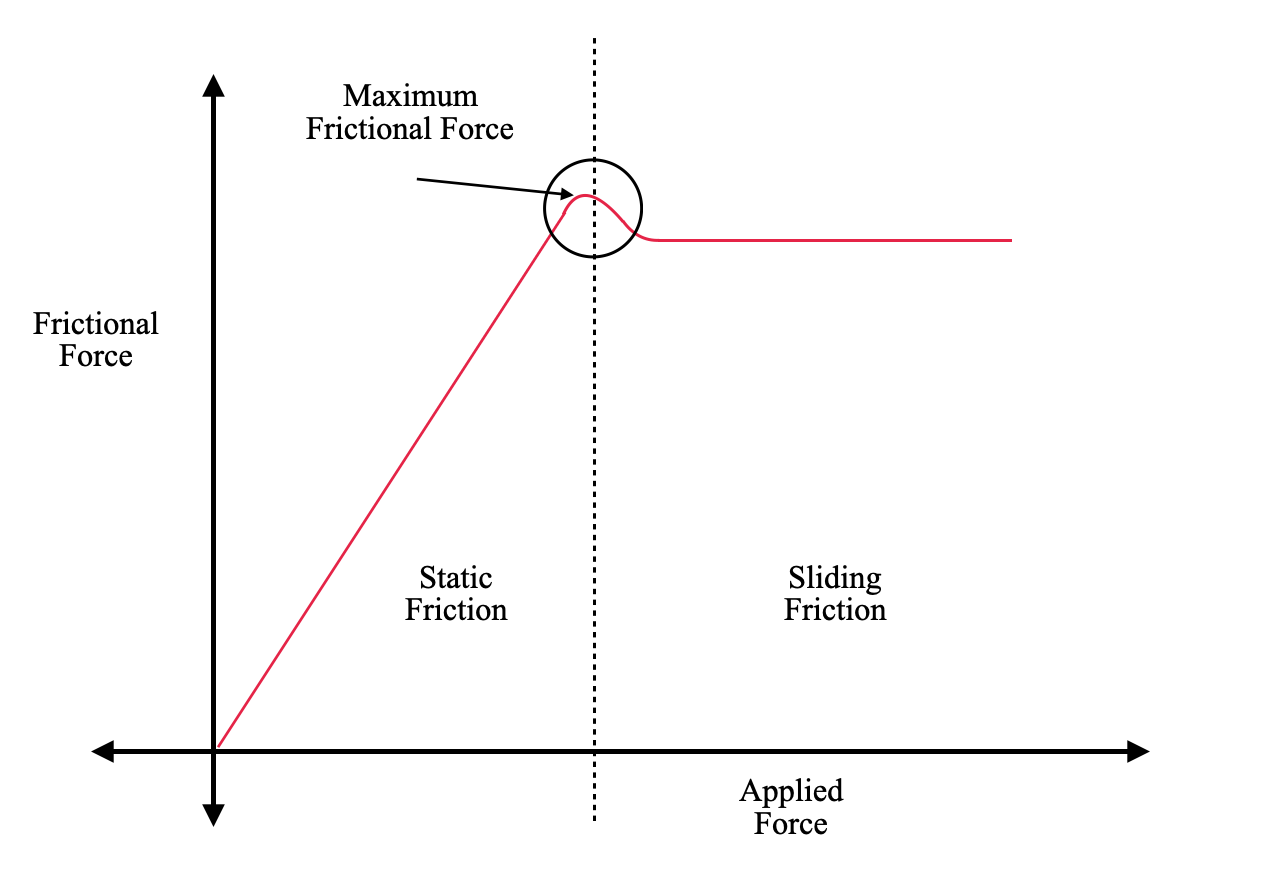
Explain why the sliding friction is less than the static friction.
Answer
579.6k+ views
Hint: Friction occurs due to the formation of microscopic bonds between two surfaces. When an object is moving on a surface, it experiences a sliding friction. When the object is at rest, and we are trying to push the object, the friction is called static friction.
Complete step by step answer:
Frictional force originates from the interlocking of two rough surfaces. When an object is kept on the rough surface, it rests on innumerable pointed sections of the surface. As the area is very small, the pressure rises to a high value.
The points of contact start to melt, and this gives rise to the friction. We define this quantity to be the frictional coefficient or 𝜇.
We can write the frictional force to be,
F=𝜇N
Where,
𝜇 is the frictional coefficient.
N is the normal force on the object.
The value of the frictional coefficient depends on the properties of both surfaces. If there are more interlocks between the two surfaces, the value of the frictional coefficient will be more.
When an object is at rest, and we are applying a force on the object, the value of the frictional force varies as shown in the following diagram.

As we can see, the static friction attains a maximum value before dropping down to a constant lower value.
This happens because the number of interlocks is much lesser when the object is already moving. As a result, we can say that,
Static frictional coefficient > Sliding friction coefficient
As the static frictional coefficient is slightly more than the sliding frictional coefficient, static friction is more than the sliding friction.
Note:
In general we refer to the static friction when we are talking about frictional force. The difference between the static force and frictional force is very small. Hence, we don’t consider the static and sliding friction to be different for our conventional cases. However, this is the reason why it is harder to set an object into motion in comparison to stopping it.
Complete step by step answer:
Frictional force originates from the interlocking of two rough surfaces. When an object is kept on the rough surface, it rests on innumerable pointed sections of the surface. As the area is very small, the pressure rises to a high value.
The points of contact start to melt, and this gives rise to the friction. We define this quantity to be the frictional coefficient or 𝜇.
We can write the frictional force to be,
F=𝜇N
Where,
𝜇 is the frictional coefficient.
N is the normal force on the object.
The value of the frictional coefficient depends on the properties of both surfaces. If there are more interlocks between the two surfaces, the value of the frictional coefficient will be more.
When an object is at rest, and we are applying a force on the object, the value of the frictional force varies as shown in the following diagram.

As we can see, the static friction attains a maximum value before dropping down to a constant lower value.
This happens because the number of interlocks is much lesser when the object is already moving. As a result, we can say that,
Static frictional coefficient > Sliding friction coefficient
As the static frictional coefficient is slightly more than the sliding frictional coefficient, static friction is more than the sliding friction.
Note:
In general we refer to the static friction when we are talking about frictional force. The difference between the static force and frictional force is very small. Hence, we don’t consider the static and sliding friction to be different for our conventional cases. However, this is the reason why it is harder to set an object into motion in comparison to stopping it.
Recently Updated Pages
Master Class 12 Business Studies: Engaging Questions & Answers for Success

Master Class 12 Economics: Engaging Questions & Answers for Success

Master Class 12 English: Engaging Questions & Answers for Success

Master Class 12 Maths: Engaging Questions & Answers for Success

Master Class 12 Social Science: Engaging Questions & Answers for Success

Master Class 12 Chemistry: Engaging Questions & Answers for Success

Trending doubts
What is meant by exothermic and endothermic reactions class 11 chemistry CBSE

Which animal has three hearts class 11 biology CBSE

10 examples of friction in our daily life

One Metric ton is equal to kg A 10000 B 1000 C 100 class 11 physics CBSE

1 Quintal is equal to a 110 kg b 10 kg c 100kg d 1000 class 11 physics CBSE

Difference Between Prokaryotic Cells and Eukaryotic Cells




